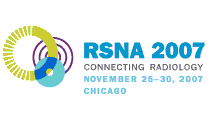
Abstract Archives of the RSNA, 2007
SSK01-03
Follow-up Rather than Excision for Papillary Lesions of the Breast Diagnosed at Percutaneous Biopsy
Scientific Papers
Presented on November 28, 2007
Presented as part of SSK01: Breast Imaging (Interventional)
Debra Somers Copit MD, Abstract Co-Author: Consultant, Johnson & Johnson (Ethicon Endo-Surgery, Inc)
Surya Vaidyanathan MD, Presenter: Nothing to Disclose
Yasmin Chaudhri MD, Abstract Co-Author: Nothing to Disclose
Management of papillary lesions of the breast diagnosed at percutaneous biopsy has been controversial. Based on several studies, at our institution we have traditionally recommended follow up rather than excision for these patients, assuming there are no other associated high-risk lesions. Because of the controversy that remains today, we decided to perform a retrospective review of our data to study the safety of our practice. We decided to include data from patients for whom we have at least two year potential follow up.
We performed a retrospective review of all percutaneous biopsies performed from January 2003 through February 2005. Out of a total of 661 procedures, 28 revealed benign papillary lesions (solitary papilloma or papillomatosis). We excluded any patients with atypia (whether or not associated with the papillary lesion) or any other lesions that have well-established recommendations for excision.
All biopsies were performed with an 11 gauge vacuum-assisted device. A total of 23 patients had ultrasound guidance and 5 had stereotactic guidance for their biopsy. The average length of follow up was 30.8 months (range 14-43 months). Three patients were lost to follow up. One patient developed DCIS at her biopsy site at 1 year follow up. Seven lesions were excised because of patient preference (n=1), surgeon's or pathologists' recommendation (n=5) or radiologic-histologic discordance (n=1). The remaining 17 have not developed cancer in either breast.
Patients who have a percutaneous biopsy with an 11 gauge vacuum-assisted device that reveal benign papillary lesions can be safely followed with mammography rather than undergoing surgical excision.
Patients diagnosed with papillary lesions at percutaneous biopsy may not need to undergo an excisional biopsy.
Copit, D,
Vaidyanathan, S,
Chaudhri, Y,
Follow-up Rather than Excision for Papillary Lesions of the Breast Diagnosed at Percutaneous Biopsy. Radiological Society of North America 2007 Scientific Assembly and Annual Meeting, November 25 - November 30, 2007 ,Chicago IL.
http://archive.rsna.org/2007/5003405.html

